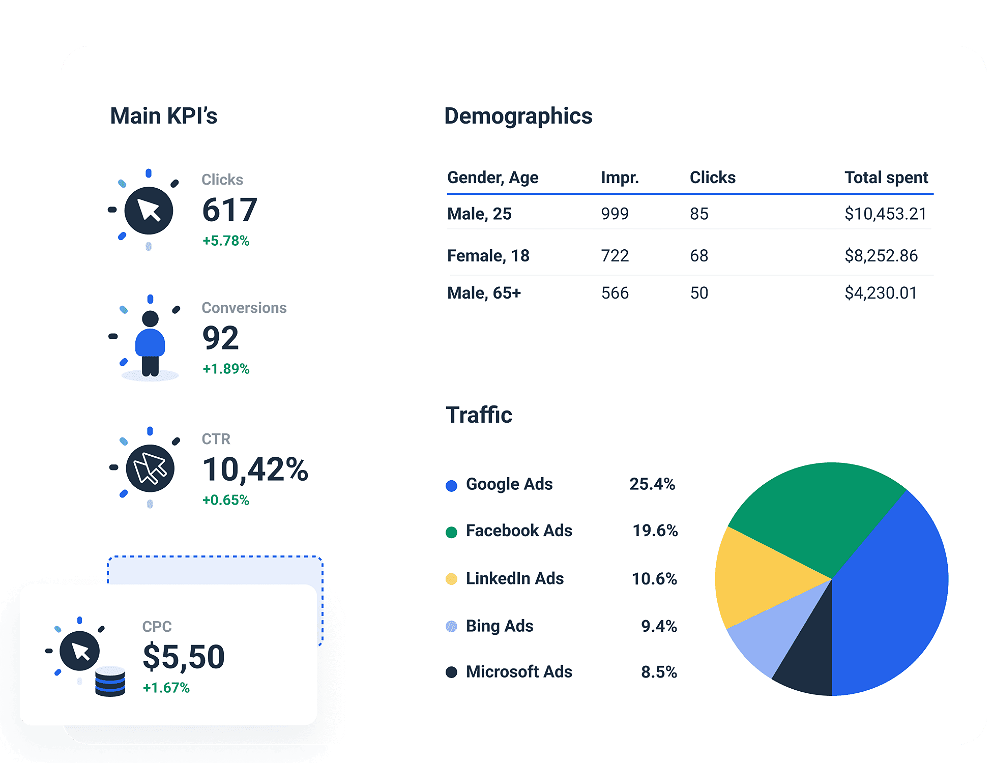If you are doing business online, chances are you are spending anywhere between $1000 – $15,000 on pay-per-click (PPC) campaigns every month.[1]
But does spending more on PPC increase your conversions? Not always — and without a PPC audit, how would you know?
Out of everything else, one thing is certain: running a PPC campaign without a PPC audit is like breaking the bank.
To save you from wasting any more extra bucks, here is our 10-step how-to guide on PPC audit so you can optimize your strategy for an increased ROAS.
Before that, let’s get some background checks.
What is a PPC Audit?
A PPC audit is a complete and in-depth analysis of your PPC campaign. It shows you what’s working and what’s not and points towards the underperforming PPC metrics.
This includes analyzing your keywords, ad copy, landing page and design, conversion tracking setup, marketing and remarketing codes/ coupons, and budget management.
The aim of a PPC audit is to:
- Optimize ad campaign
- Increase conversions
- Run PPC on budget
- See what competitors are doing
- Correct mistakes accordingly
- Save money
- Maximize return on ad spend (ROAS)
See? A PPC audit can save you time, money, and resources. Here is how you can do one yourself.
10-Step Guide: How to do a PPC Audit the Right Way?
Now that we are done going over the background, here’s a step-by-step PPC audit guide to dissect your ad campaign like a pro and get your PPC back on track.
(Note: While we will be primarily looking into Google PPC ad campaigns and how to audit them correctly, there are instances like “auditing your ad copy” where the insights are more generic. These can be translated to any ad campaign (LinkedIn, Facebook, Instagram, etc.) and not just Google Ads.)
Step 1. Start by Gathering Your Data
Every great PPC ad manager needs to go through this: organization.
Here is how you can initiate your PPC audit:
- Start by downloading your campaign data from Google Ads into spreadsheets.
- Give each spreadsheet a self-explanatory name tag like “PPC Audit – Summer 2024”. This will help you (and everyone else) compare past and future audits, organize them efficiently, and see how PPC campaigns evolve.
- Analyze each campaign separately and convert them into a suitable chart format that works best for you (line graphs, bar charts, histograms, etc.).
- Pinpoint problem areas like high CTR but low conversions and success areas like low CPC and high impressions.
- Compare different campaigns for the same PPC metric (say CTR, CPC, or Conversions) and see if you can find some trends.
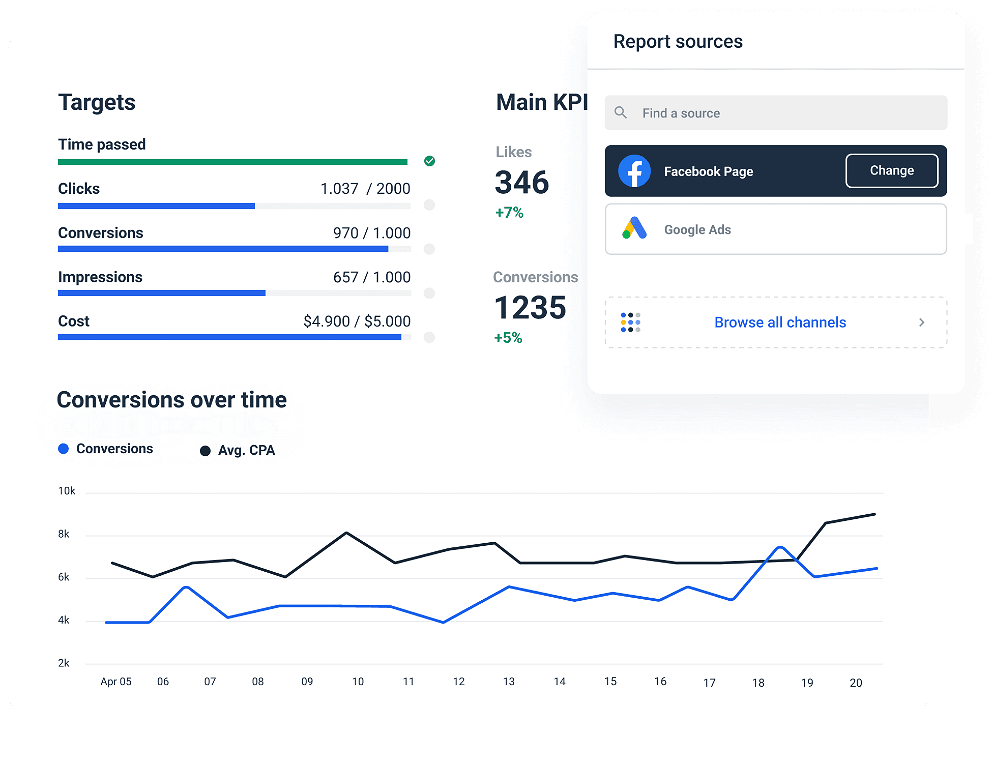
Pro-Tip: Putting the same type of graphs for the same PPC metric side-by-side for each campaign will make it easy to look out for trends. Or know exactly when there aren’t any. You may do it manually or use premium tools like What a Graph to do it for you.
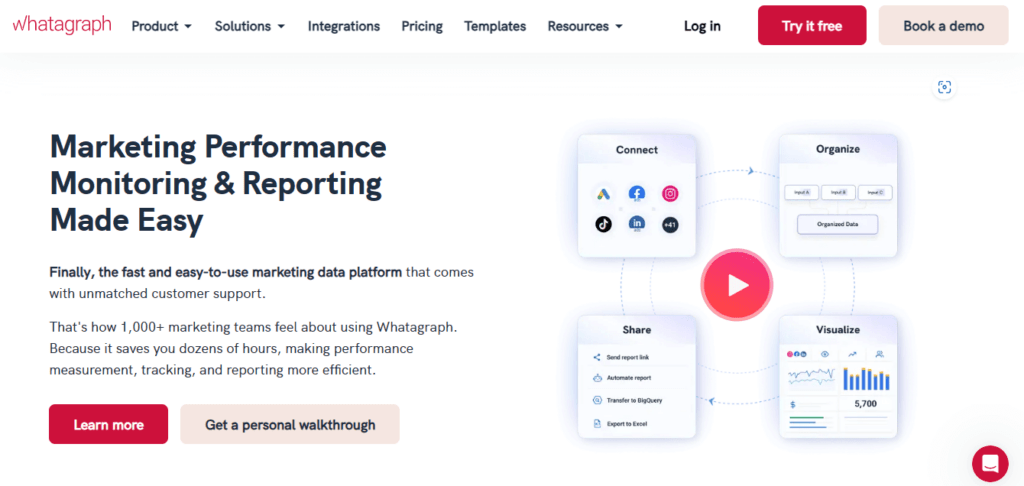
Now that the organization is done, let’s head over to our Google Ads dashboard.
Step 2. Prepare Your PPC Dashboard (Settings Check!)
First and foremost, log in to your Google Ads and Analytics accounts to double-check your settings.
Here’s the first PPC audit checklist that you can follow while reviewing them:
-
Google Analytics Link: Is your Google Ads account linked to your Analytics account? (Check under “Tools and settings” > “Setup” in Google Ads).
-
Conversion Tracking: Is it set up correctly? You can see this by checking the “Tracking Statuses” in your Google Ad dashboard.
-
Naming Conventions: Ask yourself: are they clear, specific, and consistent for easy analysis?
- Missed/ Lost Data: Are you capturing all the data? Are the coupons and tracking IDs for individual products, stores, or services firing correctly? Double-check to see how you can better automate this.
Step 3. Begin Analyzing Your Ad Content
Now it’s time to review your ad copy for:
- Accuracy
- Strong CTAs (calls to action),
- Relevant keywords
Ask yourself whether your ad copy, CTAs, and landing pages:
- Focus on clean and easy user conversion.
- Match the intent behind the search terms.
- Offer your products/ services in your brand voice.
These questions are not just for Google Search Ads but are universal indicators of everytime successful ad campaign. Let’s head over to applying them in action.
- Auditing Google/ Bing Ad Copy
Who doesn’t know about SEMRush? Almost everyone does. So, we should use it as an example. Here is the Bing screenshot for the search query ‘semrush’ and the resulting paid ad running for it.
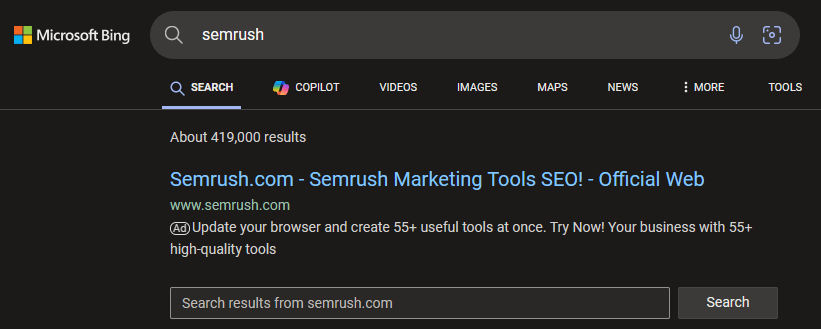
Not only is SEMRush using its ‘branded keywords’ to lower the CPC, but it also uses this as a chance to promote and create awareness.
Just because a user has typed in the branded keyword ‘SEMRush,’ it’s not necessary for a user to know the ins and outs of it. Chances are that the intent was purely informational.
So SEMRush ad copy caters to that by using the words “Marketing Tools SEO.” The next time you audit the ad copy, remember to see it from the user’s perspective, too.
Also, Google Search Ads work in the same way, so these tips apply to them as well.
- Auditing LinkedIn Ad Copy
Here is an example of a LinkedIn Ad copy (1Q) to demonstrate this. Short sentences that rhyme with the value proposition ‘real-time’ being highlighted.
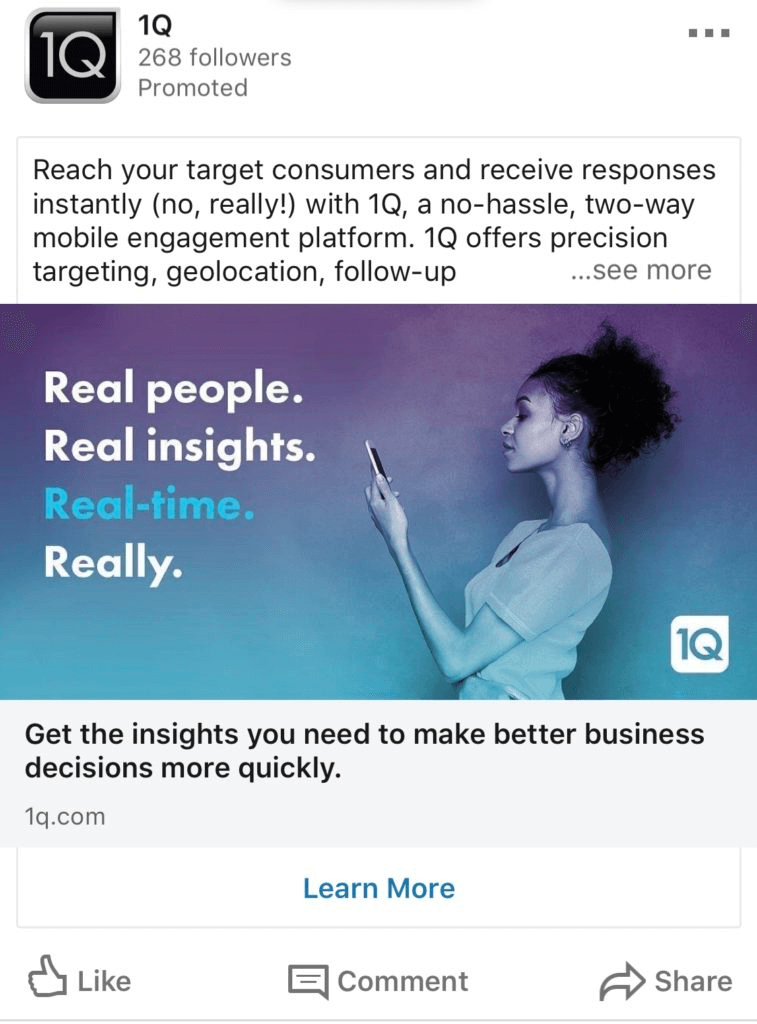
See how LinkedIn is a better place for finding B2B leads? In fact, 89% of B2B marketers use LinkedIn for lead generation.[2]
1Q, which connects brands with their customers, uses this opportunity to generate more brand subscriptions just like LinkedIn does to advertise its premium services.
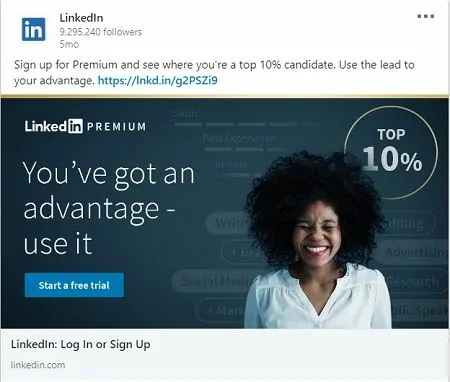
So, when auditing your ad copy, ensure you are using the best medium to advertise it.
This brings us to the next step: auditing your ad’s ‘quality score.’
Step 4. Give Your Quality Score Some Extra Attention
Once you are done optimizing your ad copy and the creative, it is time to juggle with some numbers. By this, we mean the quality score that determines the Ad Rank of your Google Ad.
Google Ads Quality Score (1-10) impacts your ad’s cost and placement. A higher score means more relevant and useful ads for searchers, leading to lower costs and better ad positions.
Here’s how to check and improve yours:
-
Quality Score Components: It considers expected click-through rate (CTR), ad relevance, and landing page relevance.
- Find Your Score: In Google Ads, go to “Campaigns” > “Search keywords” > Columns (three bars icon) > “Modify columns for keywords” > “Quality Score.”
How to Boost Your Quality Score?
- Ensure your ad message aligns with the keywords’ intent.
- Design a landing page that delivers on your ad’s promises.
- Organize keywords into tighter ad groups for maximum thematic relevance.
For example, instead of a broad group like “running shoes,” create separate ad groups for “men’s running shoes,” “women’s running shoes,” and “trail running shoes.”
Let’s discuss how you audit these ad groups in detail in step 5.
Step 5. Target Relevant Keywords and Group Them Strategically
You can have the perfect headline and the best ad design to match it, but if your ad is not reaching your intended audience, will it convert? No, it won’t – it’s just like advertising babysitting services to ‘singles, never-married.’
Here’s what you can do to match your ad with the right demographics:
- Ad Group Scrutiny: Analyze your ad groups. Are they tightly themed with 5-10 relevant keywords each? Consider reorganizing or deleting keywords for better performance.
Pro-Tip: Use Semrush’s Keyword Gap tool to find keyword opportunities your competitors might be missing.
- Negative Keyword Refinement: Identify irrelevant search terms that trigger your ads and add them as negative keywords to prevent wasted budget.
Consider the campaign data around the sales of apples (screenshot below).
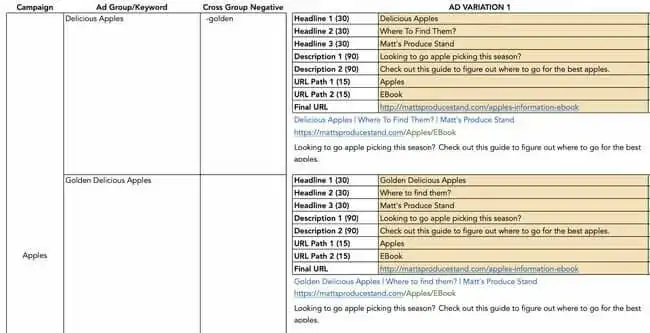
See how ad groups are highly focused: one is targeted for the keyword ‘delicious apples’ and has the cross-group negative keyword ‘golden’ added. This is because the next ad group is for the keyword ‘golden delicious apples.’
To avoid showing the same ad for both search queries, ensure you strategically personalize each user experience and make use of negative keywords, even within ad groups.
Step 6. Check if You are Using the Best Ad Extensions
Ad extensions are like free billboards attached to your ads, giving searchers more reasons to click. Here’s a quick audit to ensure yours are firing on all cylinders.
- Variety is Key
Do you have a mix of extensions like site links (links to relevant pages on your website), callouts (highlights of your offerings), and promotions (special offers)?
Here is a screenshot of Google SERPs. See how all the search ads have extensions to increase user experience and, ultimately, the CTR.
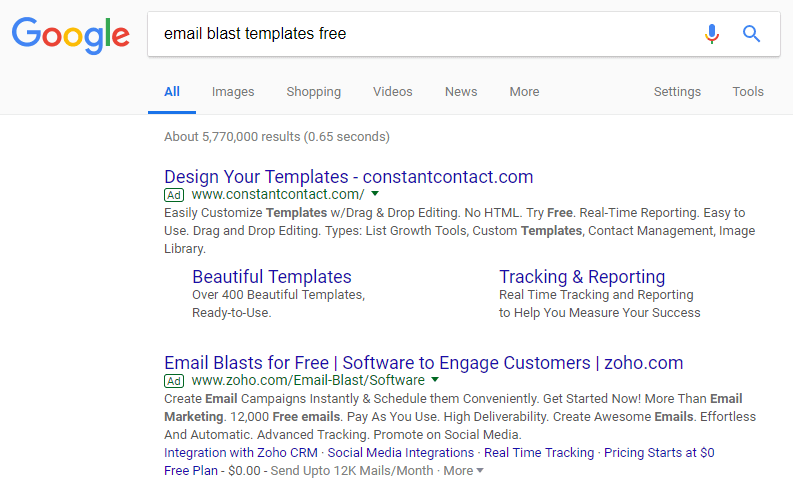
- Relevancy Rules
Ensure your extensions are directly related to your ad and landing page. For instance, a callout extension for “free consultations” wouldn’t be relevant for an ad about “emergency dental care.”
- Performance Matters
Review extension performance data. Consider removing underperforming extensions and optimizing the messaging on the remaining ones.
Pro Tip: Experiment with different extension combinations to see what resonates best with your audience. You can test things like including a link to your “About Us” page versus a customer testimonial in your site link extension. If you are unable to improve your conversions, consider PPC for franchises, which can help you get back on track.
Step 7. Look at What Your Competitors Are Doing
Learning from the best is a smart strategy, and your PPC competitors are a valuable source of intel.
Here’s how to ethically peek behind the curtain.
Ask Yourself:
- Who are the big players in my PPC space? These are the folks you want to learn from.
- How do I find paid keyword traffic they may be targeting? Simple, use a keyword research tool.
- What do I use it for? To ethically find your competitors’ biddings. For instance, imagine a bakery discovering a competitor targeting “healthy dessert options” – a valuable keyword they might have missed.
Pro-Tip: Don’t copy blindly! Analyze their choices in the context of their industry and target audience.
Step 8. Performance Analysis: Assess Your Hit Rate
Clicks and conversions are the lifeblood of your PPC campaigns. Here’s how to assess them for peak performance.
1. Focus on Clicks First
Are your ads generating enough clicks? A low click-through rate (CTR) might indicate a need for compelling ad copy, better targeting, or strategic bidding adjustments.
Ask Yourself:
-
Is my CTR lower than when I first launched the campaign? Perhaps your initial ad copy was more attention-grabbing. Consider A/B testing new headlines and descriptions.
- What can I do to make my ads more clickable? Highlight a special offer, showcase a benefit users care about, or add a strong call to action (CTA) like “Buy Now” or “Learn More.”
2. Now Focus on Conversions
Clicks are great, but conversions are what truly matter. A low conversion rate could signal issues with your landing page or a mismatch between your ad promises and the user experience.
Ask Yourself:
- What is the average conversion rate for my campaigns?
Industry benchmarks can be a helpful starting point, but don’t be afraid to set ambitious yet achievable goals for your campaigns.
- Are there any ad groups with a high CTR but a low conversion rate?
Investigate these for potential landing page problems. Analyze the user journey – is the landing page visually appealing? Does it clearly communicate the value proposition promised in the ad? Is the call to action (CTA) easy to find and click?
Remember that there’s no magic CTR benchmark. Research your industry averages and analyze your top-performing ads to set a realistic target CTR.
Pro-Tip: A low CTR might be the first domino to fall, leading to low conversions. Focus on improving your CTR first. Once clicks are up, address any lingering conversion rate issues by optimizing your landing pages. For instance, if you’re running an ad for a free consultation with a dentist, but your landing page focuses heavily on teeth whitening services, you’ll likely see a disconnect and a low conversion rate.
Step 9. See if You Are Targeting Everyone Correctly
Imagine you’re launching a new bakery. While it is okay to dream of opening international outlets, focusing on local customers first will bring in the most sales. PPC targeting works the same way.
Here’s how to ensure your ads are reaching the right people in the right places.
- Target Tightly to Control Ad Spend
Don’t waste your budget on clicks from irrelevant locations. Instead, target by city, state, or even zip code to reach your most relevant audience.
Ask Yourself:
- Do my products or services have a local focus?
- Am I excluding any areas with potential customers?
But how do you get that location data about your customers? The answer is Geo Reports.
- Use Geo Reports to Exclude Unnecessary Locations
Download a geo report within your PPC platform to see exactly where your ads are showing and performing. This data is key to refining your targeting.
For instance, if you run a dog walking service in San Francisco, exclude IP addresses from Iceland to avoid wasted ad spend. People in Reykjavik probably aren’t looking for San Francisco dog walkers!
While location is crucial, consider layering it with other targeting options for maximum impact.
- Use Device Targeting for “Near Me” Keywords
Are your ads optimized for mobile devices? People searching for a “plumber near me” on their phone likely need immediate help – ensure your ad is mobile-friendly and is visible there.
- Do Schedule When Your Ads Are Shown
Think about your audience’s habits. Evening ads might be better for takeout restaurants, while B2B software ads might perform best during business hours.
- Always Retarget to Increase View-through Conversions
Retarget website visitors who showed interest but didn’t convert.
For example, imagine someone browses your bakery’s website and looks at cupcakes but doesn’t make a purchase. You can then target them with a remarketing ad featuring a special offer on cupcakes, enticing them to come back and complete their purchase.
They’re already familiar with your brand, making them more likely to convert with a targeted ad.
Here are three ad retargeting examples from three very different industries. But the intent is the same: targeting customers who are already familiar with the product/ service.



Pro-Tip: Consider layering location targeting with other targeting options like demographics and interests. This allows you to reach highly relevant users within your chosen locations, maximizing your return on ad spend.
Step 10. Finally, Fine-Tune Your Bidding Strategy
Bidding strategies are just like fuel to your race car – you wouldn’t expect it to win with the wrong one. The only difference is that your race car is your PPC campaign.
Here’s how to ensure you’re on the optimal track.
- Align Bids with Your Goals
Are you aiming for clicks, conversions, or brand awareness? Different goals require different bid strategies.
For instance, if you’re an e-commerce store selling running shoes, you’d prioritize conversions (purchases). You might use a Target CPA strategy, setting a maximum cost you’re willing to pay for each conversion.
- Use Smart Bidding or Adjust Manually
Smart Bidding strategies like “Maximize Conversions” or “Target CPA” prioritize conversions and optimize bids for the most likely converters.
For campaigns focused on driving traffic, “Manual CPC” bidding allows you to set the maximum bid you’re willing to pay for each click.
- CPM or CPC
“vCPM (cost per thousand viewable impressions)” bidding focuses on showing your ad to a high number of people, which is ideal for brand awareness campaigns.
Say a new athletic brand needs to break into the footwear industry. They might utilize vCPM to get their brand name seen by as many potential customers as possible.
While you are adjusting your strategy, ask yourself:
- Are my current bids aligned with my goals?
- Am I getting enough clicks or conversions for my budget?
- Should I be using a different bid strategy for specific campaigns?
If you still need some insight, consider this quick tip.
Pro Tip: Consider exploring automated bidding features like Smart Bidding offered by Google Ads and Premium Tools like WhataGraph. These can save you time and optimize bids for conversions based on machine learning algorithms. However, don’t be afraid to make manual adjustments when needed to maintain control.
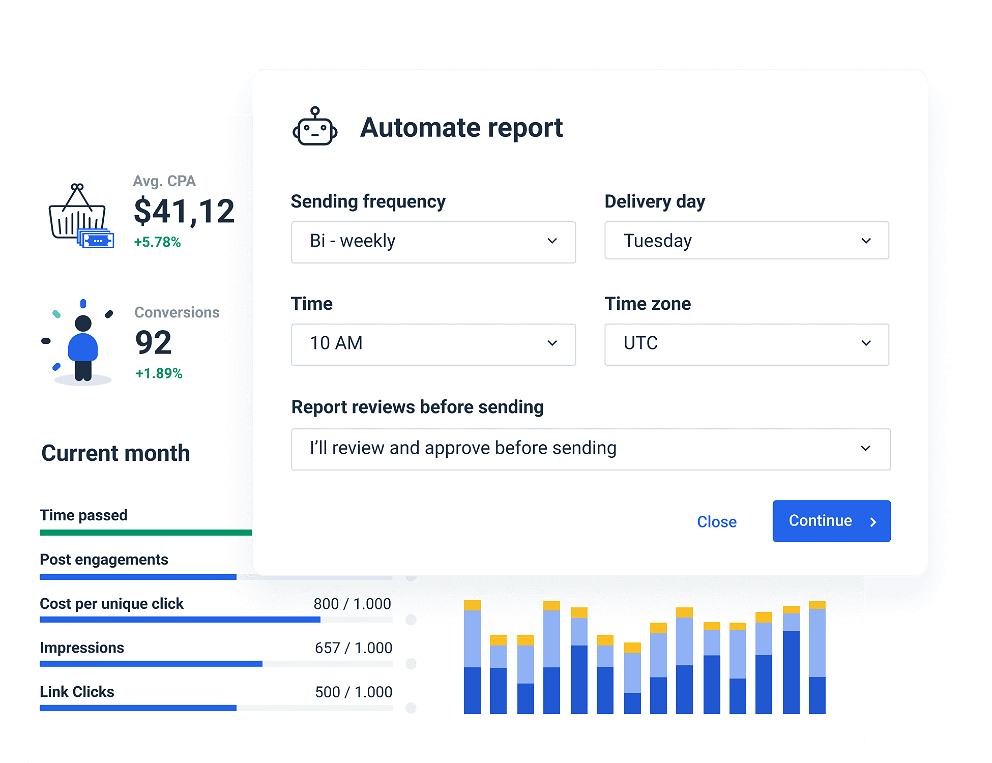
Finally, the 10-step PPC guide is over, and we hope you found some serious insights into your PPC campaign. But it’s not over over yet.
Here is the last bonus top you should take along.
BONUS: What to Remember and What to Ask When Doing Your PPC Audit?
Regular PPC audits are key to successful campaigns. But how often should you do it?
Here’s the second cheat sheet to keep your audits on point.
-
Frequency? Aim for quarterly audits (every three months) as a rule of thumb. This provides enough data to identify trends without getting overwhelmed.
-
Any Sweet Spot? Three months is ideal because less might not reveal significant changes, while a year can make it difficult to pinpoint the impact of specific adjustments.
-
Why Track & Measure? Document every change you make during your audit. This allows you to analyze the impact of each tweak and optimize your approach for future campaign success.
- Can We Be Flexible? While quarterly audits are a great starting point, your ideal frequency can vary.
Consider factors like:
- Business Needs: Fast-paced industries might require more frequent audits.
- Campaign Age: Newer campaigns might benefit from closer monitoring.
- Team Size: Larger teams might delegate audits more frequently.
- Platform Updates: Major Google Ads updates might necessitate a quick audit.
Pro-Tip: Consistency is key, so schedule regular PPC audits. This way, you can stay on top of your campaigns, identify areas for improvement, and squeeze the most juice out of your PPC budget. Don’t have anyone who can do it for you? Consider hopping on a call and getting your audit done on the phone for free!
No Obligation — Just Value
Book a 1-1 Strategy Call
Recap: Great PPC Audits Always Pay Back
PPC campaigns are never one-time set-it-and-forget-it processes. They need continuous and consistent analysis, testing, and improvement. That’s where a PPC audit comes in handy to ensure your marketing goals are realized in the most budget-friendly way.
While a PPC audit can be a game-changer in terms of providing you with strategic insights, honestly, it takes a lot of work to run one.
If you ever feel overwhelmed, the best way to avoid being burned out is to hire a PPC agency that drives high ROI.
Partner With an Agency Who Skyrockets Sales With ROI-focused PPC
With renowned brands like Icy Bear achieving 17x ROAS with Facebook Ads, RC Visions generating 15x incremental revenue, and 96 North increasing their conversions by a soaring 33% — we are always adding new PPC success stories to our portfolio.
If you have been trying to increase your sales via PPC but are ending nowhere, just get in touch. Our SEO specialists and PPC experts are always looking for a challenge. They will audit your website, point at serious problems, and devise a custom roadmap for you.
What’s more, your first 30-minute marketing call is totally free.
So why wait when you have nothing to lose?
Make Your New Six-figures Sales Record
Book a 1-1 Strategy Call
FAQ
PPC simply means pay-per-click. It’s an advertising model where you only pay when someone clicks on your ad during your campaign.
The benefits of a PPC audit include saving money by identifying areas of wasted ad spend and optimizing your campaign for better ROAS; boosting performance via improving ad relevance, keyword targeting, and landing page design to increase conversions; and analyzing competitor strategies to stay ahead of the competition.
A paid PPC audit can take anywhere from 3 business days to 2 weeks and requires access to your account. A more general and usually free audit may be done by just using .csv files or the downloadable PPC data from your account.
PPC audit costs range anywhere between $500 – $2500 per audit. It’s always better to grab any free PPC audit opportunity. Feel free to contact any of our PPC and SEM experts here at NUOPTIMA for details.
